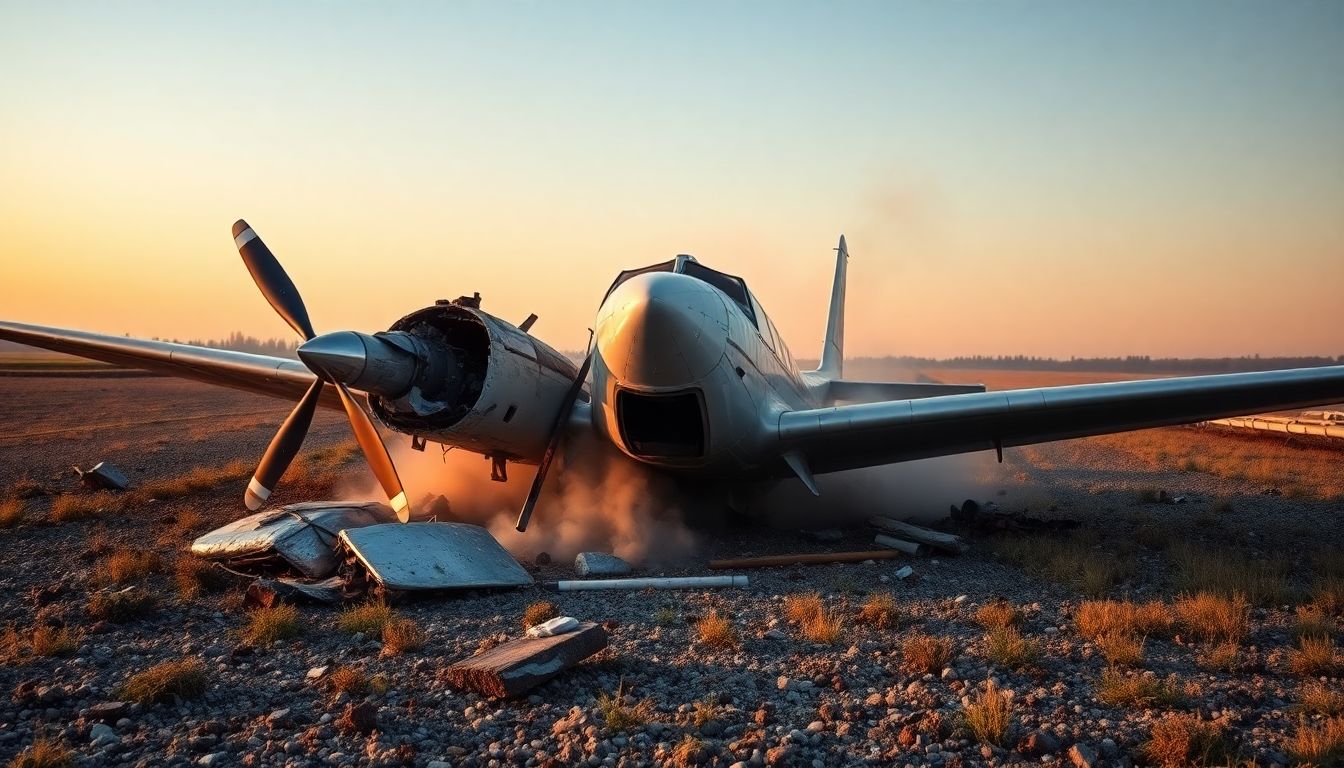
Toronto Plane Crash: A Comprehensive Guide to Air Accidents in the City
The Shocking Reality of Air Accidents Near Toronto
Air accidents can happen anywhere, but when they occur in a bustling city like Toronto, the impact resonates deeply. Toronto Pearson International Airport is one of the busiest airports in North America, which increases the potential for incidents.
Defining the Scope: Proximity to Toronto Pearson International Airport
The location of Toronto Pearson, surrounded by neighborhoods and commercial areas, raises concerns. Nearby communities often feel the aftershocks of crashes or emergencies. Understanding the risks of air traffic is essential for residents and travelers alike.
Historical Context: Notable Accidents and Incidents
In Toronto's history, several significant air accidents have occurred. For example, the Arrow Air Flight 1285 disaster in 1985 resulted in the loss of 256 lives, marking one of the worst in Canadian aviation history. Such incidents remind us how crucial safety measures are in aviation.
Emotional Impact: The Human Cost of Aviation Disasters
The human toll from air accidents extends beyond immediate victims. Families, friends, and communities suffer long-lasting emotional scars. Grief, anger, and loss can linger for years, highlighting the necessity for robust safety protocols.
Understanding the Causes of Aviation Accidents
To prevent air accidents, we must explore the underlying factors contributing to them.
Pilot Error: A Leading Factor in Air Crashes
Pilot error remains one of the most common causes of air crashes. Decisions made in high-pressure situations can lead to tragic outcomes.
Human Factors: Fatigue, Stress, and Decision-Making
Pilots may face fatigue and stress, reducing their ability to make sound decisions. Recognizing these factors is vital in enhancing safety measures.
Technical Proficiency: Training and Certification Standards
High training standards are essential for pilots. Rigorous certification processes ensure only the best are behind the controls of commercial aircraft.
Mechanical Failures: Aircraft Maintenance and Technology
Aircraft maintenance plays a critical role in preventing accidents. Even with skilled pilots, mechanical failures can lead to disastrous situations.
Aging Aircraft: Safety Regulations and Technological Advancements
Older aircraft require rigorous inspections and upgrades. Safety regulations help minimize risks associated with mechanical failures.
System Failures: Air Traffic Control and Communication
Air traffic control (ATC) relies on effective communication to manage airspace safety. Poor communication can result in accidents, emphasizing the need for ongoing training and technology upgrades.
Safety Measures and Regulations in Toronto Air Space
Toronto's airspace is subject to strict regulations, ensuring passenger safety.
Role of Transport Canada: Oversight and Enforcement
Transport Canada oversees aviation safety, enforcing regulations for airlines and airports. Their role is pivotal in maintaining high safety standards.
Investigative Procedures: Post-Accident Analysis and Reporting
When an accident occurs, thorough investigations follow. Analyzing data helps identify causes and prevent future incidents.
Safety Recommendations: Implementing Preventative Measures
After investigations, safety recommendations are issued. Airlines and airports must adapt practices to improve future safety.
Airport Security Protocols: Passenger and Baggage Screening
Airport security protocols ensure a safe travel environment. Regular checks on passengers and baggage help mitigate risks.
Emergency Response Plans: Coordination Between Agencies
Effective emergency response plans are crucial during a crisis. Agencies work together to provide prompt assistance in the aftermath of an accident.
Technological Advancements: Improving Air Traffic Management
Emerging technologies enhance air traffic management. Innovations such as radar improvements and satellite tracking increase safety and efficiency in air travel.
The Aftermath of an Aviation Accident Near Toronto
The aftermath of an air accident showcases the complexities of recovery and support for affected families.
Emergency Response Procedures: First Responders and Rescue Operations
When an incident occurs, first responders are on the scene immediately. Their swift action is crucial in saving lives.
Medical Assistance: Hospital Care for Survivors and Victims
Survivors often require urgent medical care. Hospitals prepare to receive patients and provide necessary treatment quickly.
Victim Identification and Support: Resources for Bereaved Families
Identifying victims can take time, and families need support throughout the process. Resources are available to guide them through their grief.
Legal Ramifications: Investigations and Liability
Legal investigations follow accidents, determining fault and liability. Findings can impact future safety regulations and industry practices.
Insurance Claims: Processing and Compensation
Victims and families may file insurance claims. Navigating this process can be challenging, and understanding rights is essential.
Legal Representation: Seeking Justice for Victims and Families
Families may seek legal representation to explore their options. Advocacy can help them pursue justice and compensation.
Tips for Air Passengers: Ensuring a Safe Flight
Passengers can take steps to enhance their safety while flying.
Choosing Reputable Airlines: Safety Records and Maintenance Procedures
Select airlines with strong safety records. Research their maintenance procedures and history to ensure your chosen flight is safe.
Pre-flight Checklist: Important Steps Before Boarding
Before boarding, check for the following:
- Valid ID
- Boarding pass
- Personal items packed securely
In-flight Safety: Following Instructions and Procedures
It's vital to pay attention to safety instructions during the flight. Following crew guidelines can make a difference in emergencies.
Conclusion: Striving for Safer Skies Above Toronto
Key Takeaways: Lessons Learned from Past Accidents
Learning from past accidents is crucial for improvement. Each incident provides insights that help shape future regulations and safety measures.
Looking Ahead: Future Innovations in Air Safety
The aviation industry continues to innovate. Advancements in technology and training will improve safety for all travelers.
Call to Action: Supporting Safer Aviation Practices
Everyone plays a role in promoting aviation safety. Advocate for strong regulations, research airlines, and share information to support safer skies for all.